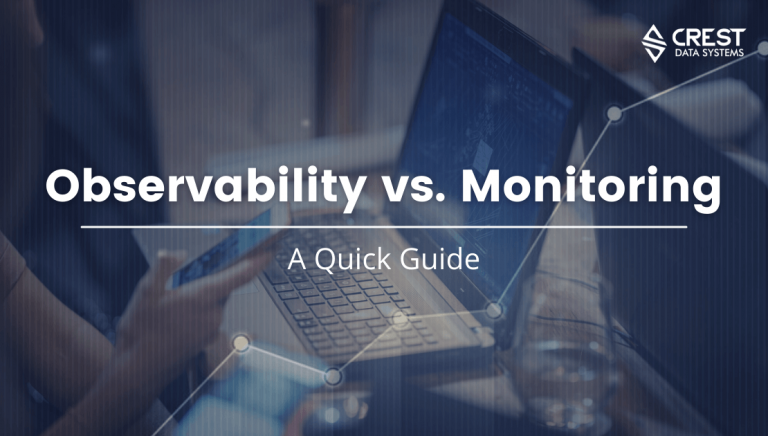
More industries are moving towards cloud-native infrastructures which are built upon distributed systems that often run layers of applications. Companies gain the benefit of high availability, scalability, and increased productivity for users but with this adds complexity and dependencies to the overall environment.
Inevitably when an issue arises, being able to answer two basic questions: “what is broken, and why?” is key and is the first step to resolving incidents quickly to minimize downtime that impacts the company bottom line.
Observability and monitoring defined in the simplest terms can be viewed as, monitoring is to tell you when something goes wrong in your system, and observability is to help you understand why.
Despite the distinctions between these definitions, the underlying goal of both is to achieve better visibility into systems. In this article we’ll explore the differences and how both work together.
Understanding Monitoring
Monitoring is the process of collecting data, logs, and metrics from your architecture to analyze and alert you if there is an incident or issue with a system component. This process allows you to measure the performance, health, and reliability of your applications and alerts you of incidents or potential incidents.
“Monitoring and alerting enables a system to tell us when it’s broken, or perhaps to tell us what’s about to break.” – Google SRE book
Mean Time to Detect (MTTD) is an important key performance indicator (KPI) to measure the reliability of an application. MTTD is a measure of how long a problem exists in an IT deployment before the appropriate parties become aware of it.
The most important goal of monitoring should be seen to provide maximum availability and reduce downtime. Mitigating the time of response to potential issues that might cause a system to go down by alerting your team quickly.
Though monitoring a system and being alerted of incidents cannot fix issues within your system. The actionable insights to resolve the problem that’s gained from a more precise understanding of the incident is where observability comes in.
Understanding Observability
Observability is the ability to collect data about program execution, internal states of modules, and communication between components. Providing an ability to measure the current state of a system’s health and performance inferred from the knowledge of its external outputs.
The aspects of observability originated from control theory, the observability and controllability of a linear system are mathematical duals. A dynamical system is designed to estimate the state of a system from measurements of its outputs.
In other words, a system is observable if one can determine the behavior of the entire system from the system’s outputs. On the other hand, if the system is not observable, there are state trajectories that are not distinguishable by only measuring the outputs.
Monitoring systems as discussed will work to detect and alert you of incidents, but observability works to deliver an in-depth understanding of the issue to provide data-driven actionable insights to your team.
DevOps Research and Assessment (DORA) defines each as follows,
” Monitoring is tooling or a technical solution that allows teams to watch and understand the state of their systems. Monitoring is based on gathering predefined sets of metrics or logs.
Observability is tooling or a technical solution that allows teams to actively debug their system. Observability is based on exploring properties and patterns not defined in advance.”
Working Together
Observability and monitoring have the same overarching goals. They improve the reliability of software systems and work to analyze the health and performance of your applications. They also pull from the same sources such as logs and traces to collect data from your architecture.
A system having both monitoring and observability tools will benefit from the alerts and insights each provides. Both play supporting but separate roles within a system. When a system encounters an issue, you should be alerted (monitoring) and your team will need to have a more detailed understanding of the components of the incident to fix it (observability).
Implement for Your Company
The reliability of a system depends on all components working together correctly and the time it takes to analyze, respond, and fix when an incident occurs is essential to the performance of your system and reputation of your company. Implementing both observability and monitoring tools to gain better visibility to your system is an integral part of a complex infrastructure.
Crest Data Systems has worked with Fortune 500 companies as well as some of the world’s most innovative companies and hottest startups to streamline work processes so teams can perform at their highest level.
Contact us to learn more about our solutions and our broad range of professional services that encompasses consulting, implementation, upgrades, migration, health checks and see how we can help you today.

AUTHOR –
TUAN NGUYEN
Tuan is a Product Marketing Manager with 8+ years of industry experience in large Enterprise technology companies and start-up. He is passionate about technology marketing and has experience in Cybersecurity, Cloud Security, and Data Center Networking.

